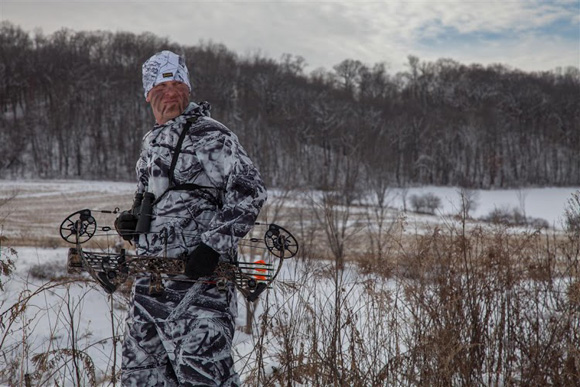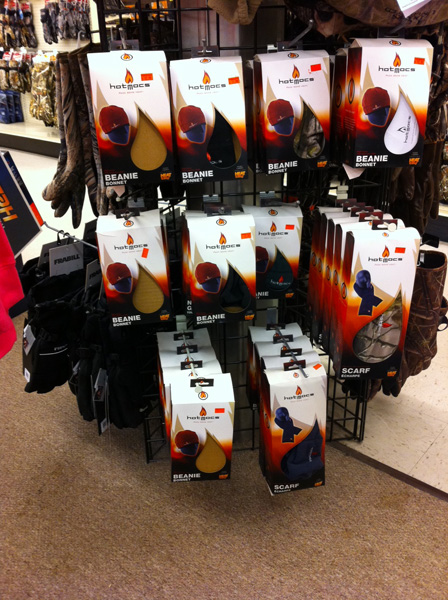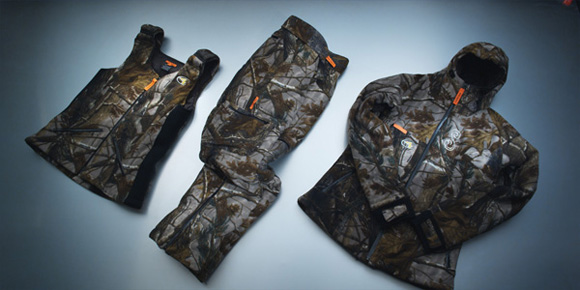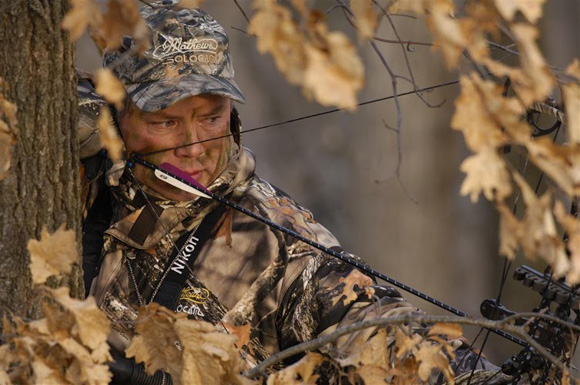LAST UPDATED: May 1st, 2015
Cold is relative. A few years ago I was guiding whitetail bowhunters in western Illinois. We had fairly normal temperatures for that time of year, mostly in the mid-40s with light winds. In my opinion, it was decent weather for early season whitetails. Two of the hunters from Florida complained about how cold it was and nearly gave up. Two of the hunters from Michigan complained about how warm it was and nearly gave up. I’m not sure anybody shot a deer that week. With the rut approaching and temperatures getting ready to drop, here are some things to consider when practicing and planning for cold weather.
Your ability to stay warm will directly influence your chances of filling a tag during cold weather.
What Can You Handle
Your ability to handle cold weather is relative to your own experience, determination and mindset. Regardless of what the thermometer reads, if you think it’s too cold, it will be. If you are not prepared to handle varied degrees of cold, you will be less effective and give up more easily. In theory we can acclimate to cold weather. It may take a few days but a person can get used to colder temperatures. Acclimation or acclimatization is the process in which an animal adjusts to a gradual change in its environment. If you plan to hunt in extreme cold, try gradually getting used to the cold for a couple days before your hunt. Take a few hikes in cold weather or get to camp a couple days early if possible. It’s sort of like getting used to altitude. For me that usually occurs by the third day of a hunt, so whenever possible I try to spend a day or 2 at higher elevation before I start chasing elk.
Everyone has a different tolerance to cold so only you can decide how cold the conditions are REALY going to be when you get in the stand.
Prepare Accordingly
Today’s bowhunter has little excuse in not being prepared for inclement weather. Technology is not foolproof but it can save your bacon. We use the ScoutLook Weather App and plan accordingly. Oftentimes hunters don’t take minor downward temperature fluctuations seriously which can quickly lead to trouble. Unpredicted rainfall can change the game. Or, if you experience any exertion and start to sweat while dressed in lightweight clothing, and the wind picks up or temperatures fall just a few degrees, this can result in hypothermia. Plan to always have a packable parka or some type of additional clothing just in case you are caught in this type of scenario. This includes those times when you are not far from home. If an accident prevents you from walking out of the woods at least you won’t succumb to exposure before help arrives.
Layer Like An Onion
You’ve heard the phrase – location, location, location. In business the perfect location of a retail brick and mortar can boost business. Well, let’s substitute words and change the phrase to layering, layering, layering. In hunting, proper layering can improve your effectiveness. Bulk is not the key. Composition is what matters. The Field Manual for the U.S. Antarctic Program recommends dressing in layers. According to the USAP you should, “Start with polypropylene underwear, no cotton (cotton clothing gets wet and stays wet; it is dangerous in the cold).Intermediate layers should be polar fleece, down, or wool: Bibs, pants, sweaters, down vests etc. Your outermost layer should be windproof (and depending on where you’re working, waterproof).”
Special products are great for adding a little extra warmth to chilly hunting conditions. The author uses boot-warmers to gain precious hours in the stand.
We use all of the HotMocs line and swear by them, especially the boot covers. Brian Zaitz, CEO of HotMocs describes the products as “patented heating accessories designed to keep you warm in the most severe cold, where other heating accessories and battery-powered units fail. The secret is strategically placed heat pockets, which allow the user to insert thermal heat packs that stay warm for hours. The pockets are placed in locations that serve as natural “thermostats” working with your body to increase blood flow and increase body temperature.”
Living in the Midwest means we get to deal with cold weather during parts of the season. We also hunt in western states where cold weather is common. As a result, I have had my share of ineffective days on stand when I probably couldn’t have pulled the bow back if a deer did come within range. Thankfully that time afield paid off because I was asked to help design one of the best cold weather hunting systems on the market. Sorry guys, it was for gals, but the basic principles behind the SHE Outdoor Apparel C4 System apply to all hunters. I fondly remember field testing the prototype garments in below freezing weather with a pretty good wind chill. I was sitting in my tree stand snug as can be in spite of the rugged conditions. After an hour or so I turned to look at my cameraman. He was curled into a fetal position on his stand and pretty much useless in regard to watching for deer. Having just arrived from Texas I guess he was not yet acclimated. I decided to cut him some slack and didn’t stay out much longer even though the deer were moving well that day.
While cold weather gear exists for everyone, the author uses special gear designed just for women.
Purchase the very best garments you can afford as the outer portion of your layering system. In the C4 System the vest and jacket incorporated body mapping technology with components designed to maintain body heat without bulk. The 440 gram fleece shell is quiet and resists burs. Waterproof but breathable is another important element to prevent sweating inside the garment.
Taking Shots
Once you have your layering system and outer garments figured out, it’s time to practice shooting your bow while wearing all the gear. Additional layers may change your anchor point. Shoot a few arrows to find out whether you need to adjust your sight pins for wearing cold weather gear. If you have spent much time hunting in cold weather you know how easily your muscles can stiffen up and not cooperate when the moment of truth demands smooth motion. You may want to consider packing rubber straps or bands that can be kept in a pocket and pulled or flexed slowly and quietly from time to time just to stay warm and flexible.
Warm clothing will always come with a slight increase in “bulk” so be sure to take a few practice shots before heading afield to ensure that your clothing doesn’t interfere with the bow string.
Animals react to cold weather in different ways. Sometimes, in temporary situations if conditions are too extreme they will bed down and ride out the storm, knowing they would expend more energy searching for food than staying put. Other times, cold weather will cause the animals to be on the move earlier and stay in food sources later. These are the times when your cold weather practice and planning will pay off.










